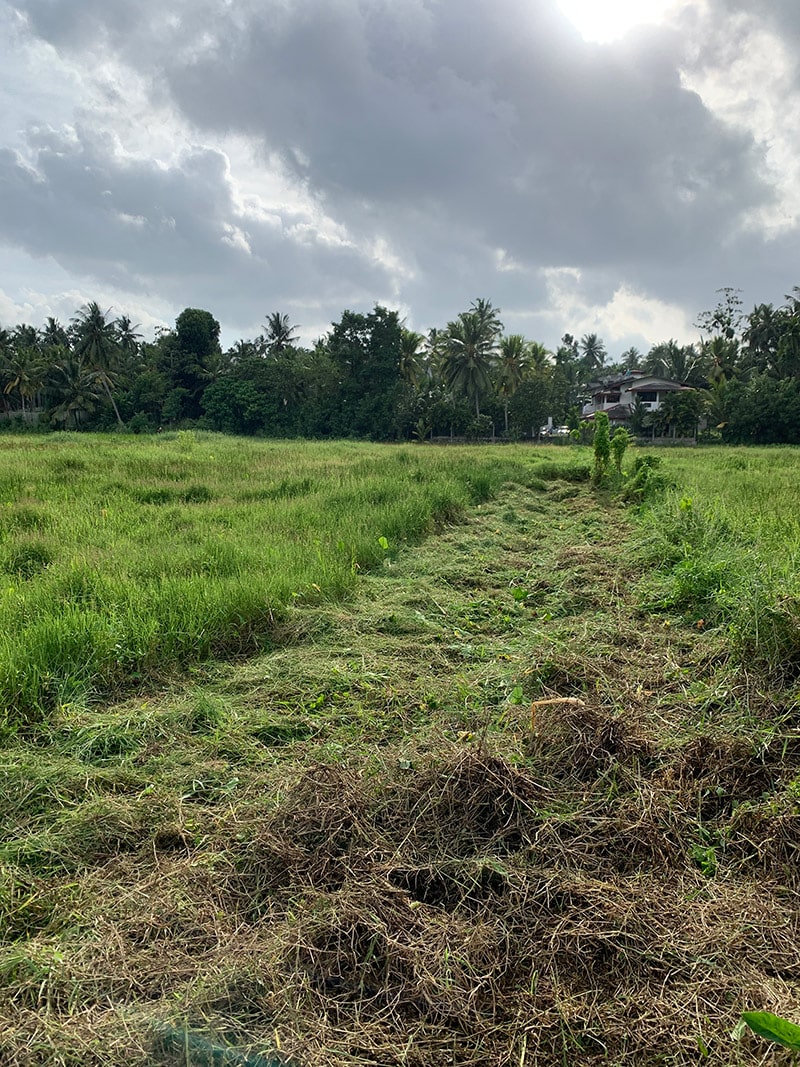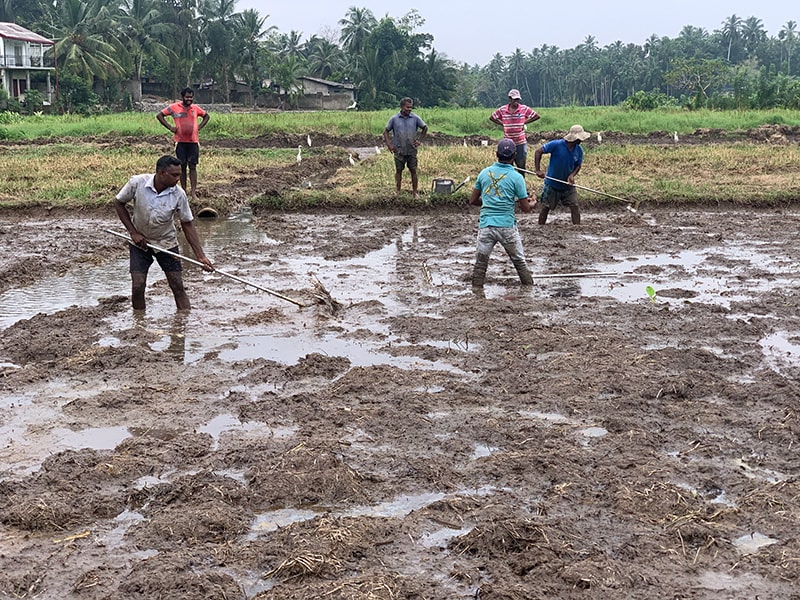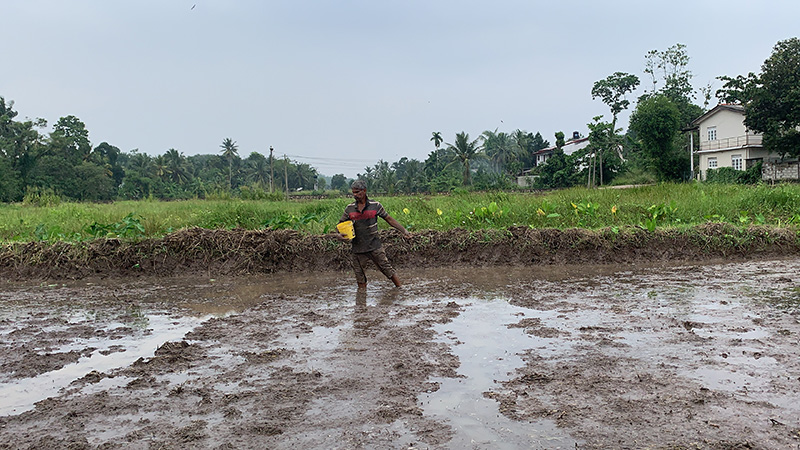Paddy Field Project Round 1



On October 17 2020, we initiated work on a small field. Initially we wanted to see how it's done. Some of us even got into the field. Our theory was, before giving solutions to a problem, you need to face it hands on.
Preparations
Our plan was simple. Grow without using any chemical fertilizers. We got a small paddy field belonging to the Hokandara Dakshinaramaya Temple. Dr. Ven. Maduruoye Dhammissara Thero gave us the field with one condition. We cannot use chemical fertilizers. Which is not an issue to us since we wanted the exact same thing!
Since the field haven't been touched by anyone for years (In Sinhala, we call it a Puran Kumbura) there were a lot of work to do before we can sow the seeds. First, we had to cut the grass and clear the ridges (Niyara). With that we had to puddle the field in order to break down the grass and get the mud. We had to use the tractor twice. But then also it wasn't enough. So, we again did it manually. Preparing the field for the first time after years is not that easy. There are a lot of things you have to do. But still it won't be that perfect. Most important thing you need to keep in mind is, don't get discouraged if a field like this does not give a good yield on the first time. Every good farmer knows that.

After preparing the field, we added some organic fertilizers and leveled things in preparation for sawing. On the same day, we sowed the seeds.


Disaster Strikes
After about two weeks, we noticed that our young plants are getting brown. They are dying. The local farmers told us it's a pest which feeds on the plants. Locals call it the Kooru Lede. According to them, the major reason for this happened is because we sawed seeds a bit late. Should have done it a week or two earlier. We put organic fertilizer mixed with Neem dust and waited few days. Things didn't improve. It got worse. So, at the last moment, we had to use a pesticide called Marshall 20 to save the crops. After using it, within 4 days the crops became green again.
Since no one have touched the field for years, we had to use a mild weedicide to control the unwanted grass. Fortunately, all of these things happened only at the first 2 to three weeks. After that, no chemicals were used.
Only Organic Fertilizers Were Used
Even-though the plants looked week, we only kept using organic fertilizers. Some say that these plants doesn't need to be 100% green as many farmers want them to be. Farmers use excessive amounts of urea to keep the plant green and big. But some say that it can hurt the plant and even reduce the yield.
Being that said, we need to mention that the other farmers in the same area used chemical fertilizers. To them, we were a joke. For the whole village we were a joke (But there are many from the village and from the other fields who helped us in many ways, and we are ever grateful for them!). But we knew what were doing and we knew we cannot get a profit on the first try. We had to keep trying. This is a research project!

What We Learned
At the end, we learned a lot! First and the most important thing... If you are going the organic way, you have to follow different methods. The methods normal farmers use will not work for you. Things change starting from the way you prepare the field. We are still learning them.
The second thing is, you cannot use genetically modified seeds. They cannot withstand the pests. They need the chemical fertilizers. It'll be very hard to grow them organically. Even-though we picked Kurulu Thuda, we later learned that it have been slightly modified. There are traditional, untouched seeds which are much stronger. Use them if you want to be successful in organic planting.
The third thing is, you have to time things well. If you get late, certain diseases may come.
The fourth thing is, doing a paddy field is not easy! It's easy to go to the supermarket, buy some rice and enjoy. But after we get into the process of making them ourselves, our whole perspective on our daily meals have changed! How many things can go wrong? How much effort does a farmer have to put? What kind of risks they take? It's mind blowing. At the moment we have already started the second round. Expect a new article on that!
At the end, we decided to keep going. Paddy fields are very interesting and highly essential to us humans. We need to eat in order to survive! That doesn't mean we have to eat poison! Our target is to find a way to get rid of the poison and make your meal safe again.

